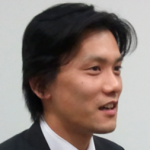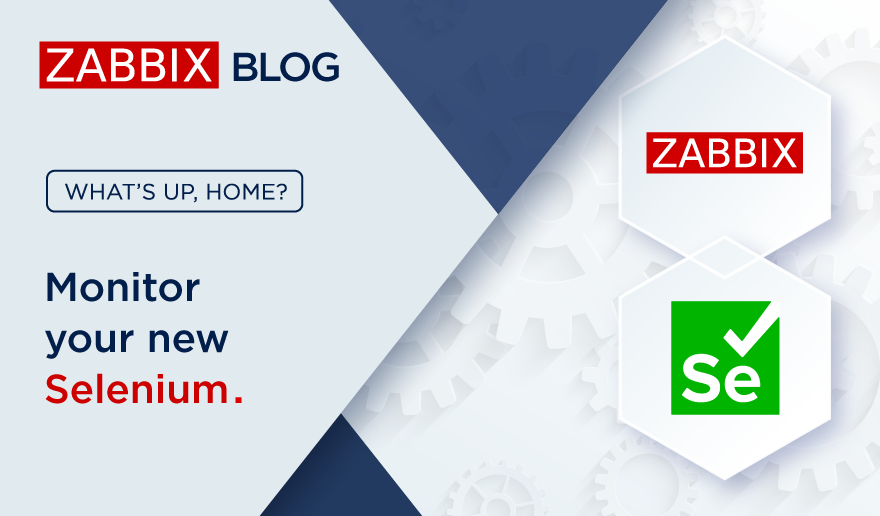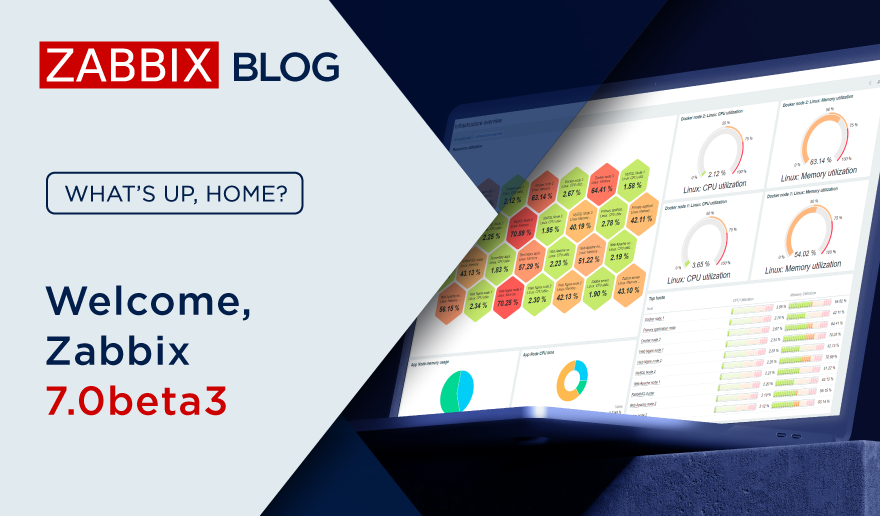 This article is a translation from an interview with Kodai Terashima in @IT in Japan. Please do not hesitate to comment if you notice any mistakes or anything strange!
This article is a translation from an interview with Kodai Terashima in @IT in Japan. Please do not hesitate to comment if you notice any mistakes or anything strange!
This article has already been translated into Brasilian Portuguese – Representante do ZABBIX-JP está indo para a Letónia.
“Community activities changed everything” – The only Japanese engineer working in Latvian company
2011/04/27
Latvia is a country by the Baltic Sea. The country is one sixth of Japan, official language is Latvian, and there are many people who speak Russian. The capital is Riga, which is a beautiful port city, called “Pearl of the Baltic”. Zabbix SIA, which is developing Zabbix, an open source monitoring software, is located here.
“I had never dreamed that I might work abroad, moreover in Latvia,”
says Kodai Terashima, who is a representative of ZABBIX-JP (Zabbix community in Japan) and the only Japanese engineer working in Latvia. He had been working for MIRACLE LINUX CORPORATION, but quit the company in April 2011. Soon after that, he went to Latvia and now he works for Zabbix SIA.
Going to Latvia – it was a very big decision for his career. Why does he work in a foreign country in which there are only 20 Japanese people? His answer is very simple. “It’s the community activities of Zabbix.”
The encounter with Zabbix has changed everything
He first encountered Zabbix in 2005. At that time, he worked for a System Integrator company as an infrastructure engineer who manages and constructs networks and servers for IT systems.

Mr. Kodai Terashima, Zabbix SIA
“Our system is down often, so we would like you to construct a monitoring system, but we don’t have enough budget.” It was one of those projects that would change his career.
“My work was “looking for a good and free monitoring software.” I searched and compared some open source monitoring software. So, I had my eye on Zabbix.”
At that time, Nagios was the most famous software as an open source monitoring tool. There were many installations of Nagios in Japanese companies, and translated Japanese documents. On the other hand, Zabbix was a totally unknown software. In his words, there was not one Japanese document related to Zabbix as a result of Google search in 2005.
However, features of Zabbix were an equal match for Nagios. As a result of comparing some open source monitoring software, Zabbix was adopted in the project. “The project might be a very early installation of Zabbix in Japan,” says Kodai.
Only one in community
In August 2005, a few months after the project completion. Mr. Terashima launched ZABBIX-JP site, as a community of Zabbix in Japan.
“I posted a patch which was Japanese translation of Zabbix web interface at the same time. That was the start of exchanging some e-mails.”
The main activities of ZABBIX-JP are translation of web interface and documents, sharing of information on the forum, creating and sending patches. Currently ZABBIX-JP has hundreds of users in the mailing list and 8 person staff, but it was only himself in the community in 2005.
There were many tasks for him alone. The translations were especially troublesome. He hadn’t used English in his life and work before launching ZABBIX-JP. He had only read some English technical documents. He continued to gather and translate Zabbix information after work for several years.
Launching and managing the site of the software which he encountered in the project alone — not only doing some tasks but also keeping his motivation going seems hard. However, Mr. Terashima says, “I became an infrastructure engineer because I was interested in Linux, so I had a dream of launching a open source community.” Moreover, “If a forum is opened, I have to answer the posts,” he smiles quite openly.
Zabbix at work not only in community
Mr. Terashima thought “I would like to get into the open source world”, so he changed his job to MIRACLE LINUX CORPORATION. At first, his work was related to Linux, and then he launched a Zabbix business in the company because of a request for “good monitoring software” by his customer in 2008.
He planned and did consultations, support for third-party software of Zabbix, and has grown the business. The business has grown to 4 full-time engineers in Zabbix team. As a result, the team has achieved the completion of about 20-30 Zabbix projects in about 3 years.
Zabbix began to spread in Japan with the expansion of the business. There were not many posts on the forum of ZABBIX-JP at the beginning, but the number of posts increased after a while. As Zabbix-related information was placed in some media in 2008, the posts in the forum increased to 10 posts per day.
“I must get wide knowledge as an engineer”
Mr. Terashima got into Zabbix not only with the community but also work. He is thankful to his company which accepted his community work and gave him the opportunity to launch the Zabbix business, but he started thinking about a job change.
“I wanted to know more things. I have been using Zabbix for 6 years, and I have worked for MIRACLE LINUX for 5 years. If someone works for one company, their knowledge and work style tends to fix. I want to know other technologies and companies, and to get more knowledge.”
Infrastructure engineers should have wide knowledge including servers, networks, applications, etc. He says “I am an infrastructure engineer,” again and again. His words, “An engineer should want to acquire varied knowledge, not stick to one technology,” reveal his goal as an infrastructure engineer.
Why don’t you work in Latvia?
November 2010. The turning point came suddenly from across the sea.
“If you are going to change your job, why don’t you work in Latvia?”

Mr. Terashima and Mr. Alexei Vladishev, in Tokyo.
He told Mr. Alexei Vladishev who is the president of Zabbix SIA and his friend from 2005 about the job change and he was offered this, “First of all, why don’t you work for Zabbix SIA as an engineer for one year.” The offer surprised him, but he accepted it readily.
“For a man who had been in the community, it would be a pleasure to read and touch software codes in the original company. And I’m looking forward to seeing the engineers in Zabbix SIA who I have communicated with only by e-mail,” he says with a smile.
Zabbix is not like general OSS, developed by a company. So, all of the contributors could work for Zabbix SIA. In Latvia, a new land and environment, a possibility to join the development team of the software can be suitable for anyone who wants to do “challenging a new things.”
He asked his company about it, and got “Please come a big in Latvia” as response, with encouragement. Six months later, he would set foot in Latvia.
Relationships with people are bred by community activity
Mr. Terashima’s role in Latvia is to be a “Bridge between Japan and Latvia”, supporting Zabbix users and Zabbix partner companies, and marketing for Zabbix in Japan. He says “I want to join the development of Zabbix in the future.”
On the other hand, he still worries about language communication. He has only used English with ZABBIX-JP community work, not on business. In addition, engineers of Zabbix SIA speak English in Zabbix SIA, but the official language is Latvian in Latvia. The distance of Japan and Latvia is revealed by his words “There is only one Latvian language book in Japan”. “But”, he added.
“If I was alone, I wouldn’t have enough courage to go to Latvia. But I have a relationship which was cultivated through ZABBIX-JP. I think that engineers in Zabbix SIA, Alexei and many people will help me, so I could decide to go there.”
And, the relationships with people in Japan also give him confidence.
“I have joined the Open Source Conference and study meetings of infrastructure engineers from 2010. I’m glad that I could get a chance to have relationships with many people and I am called “Terashima-san, specialist of Zabbix” in this community.”
Translation of OSS into Japanese will extend your activity
“Why don’t you try to do a community activity?” he emphasizes.
Community activities create a good chance to build relationships, especially for an engineer who wants to work abroad. He especially recommends trying an OSS which has not been translated into Japanese yet. There are many things to do like translations and creating patches, then engineers from abroad will get to know your name while talking about these tasks in the mailing list.
He also mentions English communication which most of engineers might worry about “Even if you have not used English before, you can translate or write e-mails in English because most Japanese can read and write in English well. You don’t have to speak English. You can write an e-mail in English, it’s a good starting point,” he encourages.
“I think that it is hard to keep your motivation going if you are doing the translation tasks alone. You will get greater confidence if you can communicate with foreign engineers in English by e-mail if you are not good at English.”
The activity started alone goes over the sea
We asked him what he would like to experience in Latvia, and how he would like to grow as engineer. He answered, “I want to become an engineer who knows the entire IT technology widely and generally and then knows specific points deeply.”
Most of “Great engineers” who he has met at the Open Source Conference or study meetings for infrastructure engineers are that type, he thinks.
“Well, it’s difficult if you are not so. If you have specific technical knowledge deeply, everyone remembers you as a specialist of something in community or study meeting. It’s important.”
Zabbix is an integrated monitoring software, it can monitor many type of devices, so it is necessary to have a wide knowledge of applications and infrastructure. Exactly, Mr. Terashima is an engineer who “knows the entire IT technology widely and knows more than just anyone about Zabbix.”
The community activities started alone became a business, made relationships and have gone over the sea. “Now, I am glad that I have one more pleasure in seeing the map of the world.”










 Prev Post
Prev Post 




